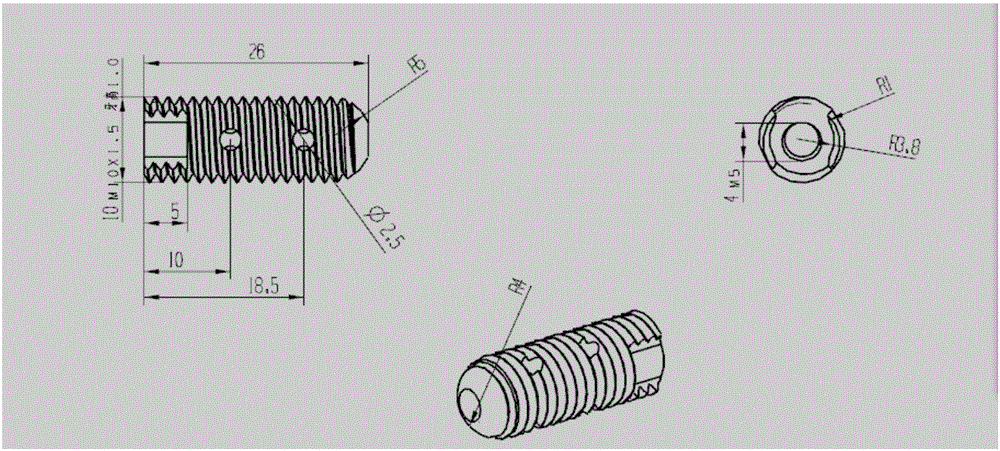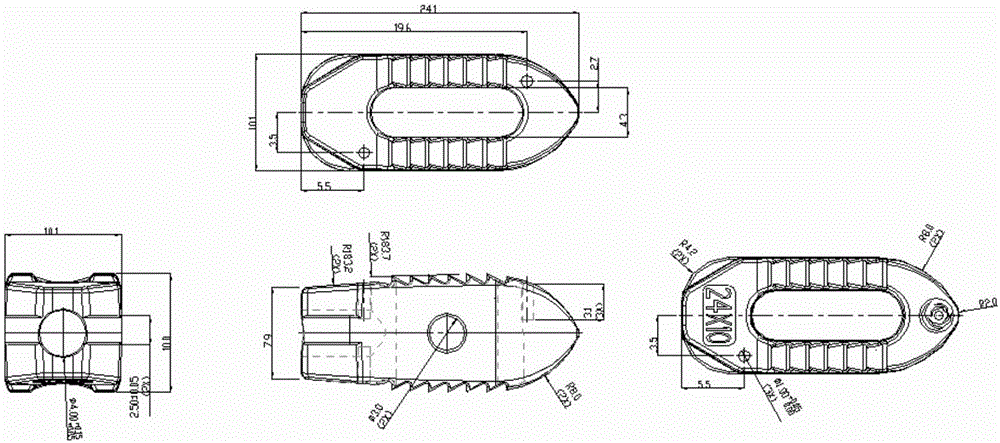Application of biologically absorbable polyphosphate and amino acid copolymer material
A polyphosphate and amino acid technology, applied in the field of biomedical degradable materials, can solve problems such as application limitations, uncontrollable degradation rate, and excessive mechanical strength attenuation, so as to improve hydrophilicity and degradation performance, large plasticity and application Value, effect of improving physical and mechanical properties
- Summary
- Abstract
- Description
- Claims
- Application Information
AI Technical Summary
Problems solved by technology
Method used
Image
Examples
Embodiment 1
[0042]Take 55.17g (0.4875mol), 31.94g (0.2438mol), and 25.14g (0.2437mol) of caprolactam, 6-aminocaproic acid, and γ-aminobutyric acid, respectively, and put them into a 250ml three-necked bottle, add 70ml of distilled water, and pass nitrogen gas protection , stirring and gradually raising the temperature to 150°C to 200°C for slow dehydration. After the dehydration is completed, the prepolymerization reaction is 0.5 hours, and the temperature is raised to 210°C for 1.5 hours of polymerization reaction. Add 7.15g (0.025mol) of cyclic phosphate after calcium chloride dehydration, The temperature was raised to 220°C for ring-opening reaction for 1 h, and then cooled to room temperature under nitrogen protection to obtain 101.4 g of a light yellow solid. The obtained polyphosphate amino acid copolymer is broken into 1-3mm particles. The polyphosphate content in the copolymer was 2.5%.
[0043] The polyphosphate amino acid copolymer was subjected to an in vitro simulated body fl...
Embodiment 2-4
[0045] Take respectively 56.01g, 53.75g, 50.92g, 53.75g, 50.92g of caprolactam, 6-aminocaproic acid, and γ-aminobutyric acid.
[0046] Add 32.42g, 31.11g, 29.48g, 25.52g, 24.49g, 23.20g into a 250ml three-neck flask, add 70ml of distilled water, protect with nitrogen, stir and gradually raise the temperature to 150℃~200℃ for slow dehydration, pre-polymerization after dehydration is completed React for 0.5 hours, heat up to 210°C and polymerize for 1.5 hours, add 2.86g, 14.3g and 28.6g of cyclic phosphate esters after dehydration with calcium chloride, heat up to 220°C for ring-opening reaction for 1h, then cool to room temperature under nitrogen protection , to obtain copolymers with different contents of polyphosphate, the contents of which are 1%, 5% and 10% respectively. The obtained polyphosphate amino acid copolymer is broken into 1-3mm particles.
[0047] The polyphosphate amino acid copolymer was subjected to an in vitro simulated body fluid immersion test, a clear wat...
Embodiment 5
[0049] Take 55.17g, 30.04g, 23.11g, 3g and 5g of caprolactam, 6-aminocaproic acid, γ-aminobutyric acid, lysine and proline, respectively, and put them into a 250ml three-necked bottle, add 70ml of distilled water, and pass nitrogen gas protection , Stir and gradually raise the temperature to 150°C to 200°C for slow dehydration. After the dehydration is completed, the prepolymerization reaction is 0.5 hours, and the temperature is raised to 210°C for 1.5 hours of polymerization reaction. Add 7.15g of cyclic phosphate after calcium chloride dehydration, and heat up to 220°C After ring-opening reaction for 1 h, it was cooled to room temperature under the protection of nitrogen to obtain 103.17 g of light yellow solid. The obtained polyphosphate amino acid copolymer is broken into 1-3mm particles. The polyphosphate content in the copolymer was 2.5%.
[0050] The polyphosphate amino acid copolymer was subjected to an in vitro simulated body fluid immersion test, a clear water test...
PUM
| Property | Measurement | Unit |
|---|---|---|
| Diameter | aaaaa | aaaaa |
Abstract
Description
Claims
Application Information
 Login to View More
Login to View More - R&D
- Intellectual Property
- Life Sciences
- Materials
- Tech Scout
- Unparalleled Data Quality
- Higher Quality Content
- 60% Fewer Hallucinations
Browse by: Latest US Patents, China's latest patents, Technical Efficacy Thesaurus, Application Domain, Technology Topic, Popular Technical Reports.
© 2025 PatSnap. All rights reserved.Legal|Privacy policy|Modern Slavery Act Transparency Statement|Sitemap|About US| Contact US: help@patsnap.com


